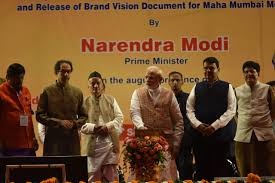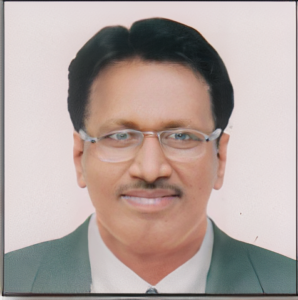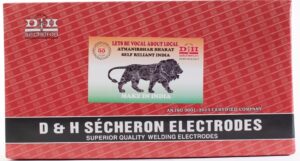
The Mumbai Metro is a rapid transit system serving the city of Mumbai, Maharashtra, and the wider metropolitan region. The system is designed to reduce traffic congestion in the city, and supplement the overcrowded Mumbai Suburban Railway network. It is being built in three phases over a 15-year period, with overall completion expected in 2025. When completed, the core system will comprise eight high-capacity metro railway lines, spanning a total of 235 kilometres (146 mi) (24% underground, the rest elevated, with a minuscule portion built at-grade), and serviced by 200 stations.
The metro project will be built at a total cost exceeding $20 Billion (1,50,000 Crore Rs) over the next 5 years.
Mumbai Metro rail system project details and planned timeline
The project’s master plan execution has been planned in three phases. Phase I covers a total length of 62.68km. It includes the 11.07km Versova-Andheri-Ghatkopar route, the 20km Colaba-Bandra section and 31.8km Charkop-Bandra-Mankhurd route. Phase II has been planned to cover the 7.5km Charkop-Dahisar route, the 12.5km Ghatkopar-Mulund route and 19.5km BKC-Kanjurmarg via Mumbai Airport sections. Phase II will be executed in 2012-2017. Phase III will include the development of the 18km Andheri East-Dahisar East route, the 21.8km Flora Fountain and Ghatkopar and an underground section route. Phase III will be executed in 2016-2021.
Ashwini Bhide, Former Mumbai Metro Rail Corporation Ltd (MMRCL) Managing Director said, “When it opens, the new system will slash journey times on the 11km east-west corridor from 90 minutes to just 21, crossing densely populated areas and major industrial locations.”
Rolling stock to run on the metro in Mumbai, Maharashtra
For passenger comfort, the trains will feature air-conditioning and the aim is to develop trains capable of carrying up to 1,500 passengers in a four-car unit. With the input of the Delhi Metro Corporation and Hong Kong MRT, the new trains are likely to follow similar standards to those already in operation in those major cities.
Onboard power supply, control and data cables for the rolling stock of phase I will be installed by a French company Nexans under a subcontract from NPRT. ContiTech Railway Engineering will provide its state-of-the-art primary and secondary air suspension systems for the entire rolling stock fleet.
Signaling and communications along the MMRDA’s metro lines
Mumbai Metro will feature the latest signalling technology, including automatic train protection (ATP) and automated signalling to control the high-volume of train movements.
The project is focusing on the development of an environmentally friendly system to become Asia’s first Green Metro, right from the construction stage,” informs Abhay Kumar Mishra, CEO of Mumbai Metro One Pvt Ltd.
Engineering Challenge – Tunneling through the 2nd most populated city in the world
Underwater Tunneling
After Kolkata, Mumbai will be the second city with an underwater metro. The tunnelling for the same has been completed under the main channel of the Mithi river in Mumbai. This amazing feat has been achieved by the Line 3 of Mumbai Metro, which runs from Colaba to Seepez. The entire stretch under the riverbed is 1.18-km-long and the tunnels have crossed the 270-metre-long active river channel.
This underground metro is an engineering marvel given the fact that the underwater tunnelling is way more challenging than digging through a rock. The waterbed of the Meethi river lies 17 metres above the said tunnel, that has made mass rapid transport system running underwater, a reality in Mumbai.
A major part of the construction of these tunnels has been completed and the entire underground corridor is expected to be ready by March end. The portion of the line that lies under the river, includes the patch between Bandra Kurla Complex (BKC) and Dharavi station. The active water region is a 270-metre stretch where water continuously flows.
A third tunnel is also under construction by the MMRCL and it is being made using the New Austrian Tunnelling Method (NATM), which is a traditional manual intensive form of tunnelling. According to a media report, there will be three rail lines instead of two with one being used to reverse trains.
Geological and topographical extreme tunneling
The technology and method used is TBM (Tunneling Boring Machine) and NATM (New Austrian Tunneling Method).For tunneling a very common method used is Cut and Cover (C&C): Construction methodology where a box is cut & covered.
Mumbai city will see such a big scale infrastructure intervention, spanning 33.5 km in the city for the first time in recent history. The project poses number of challenges:
• Mumbai: Seven islands with history of reclamation since 1800
• Parent rocks of Mumbai region are volcanic in nature – Basalt, Breccia, Tuff
• Intertrappean Sedimentary Rocks like Shale (long period of quiescence in volcanic activity)
Thickness of overburden soil 1.0 m to 14.0 m.
• Predominantly: Marine Clay, boulders, filled-up material
• Ground Water is close to ground level
Geological Condition Possible Construction Issues
Compact Basalt High degree of jointing, water bearing strata, rock fall, instability
Contact Boundary between Basalt and Breccia Filling of clay at contact plane, weak rock mass at contact zone
Tuff, Tuff Breccia Clay minerals in rocks produce sticky muck and may jam cutters affecting progress
Intertrappean Shale Unstable due to their inherent softness which may be aggravated by their closely spaced laminations, water seepage along bedding planes, rock fall due to softening in contact with water, swelling behavior
 “All these conditions lead to unstable tunneling environment,” added Ashwini Bhide.
“All these conditions lead to unstable tunneling environment,” added Ashwini Bhide.
Mumbai specific tunneling challenges
The corridor passes through densely populated and congested parts of Mumbai, It is practically unavoidable not to have tunnels passing directly underneath or in a close proximity of existing buildings and existing infrastructure. The alignment is in proximity of High Rise Buildings (existing) , Proposed Development / Redevelopment, Heritage Buildings, Dilapidated Buildings , Flyovers and Metro Viaduct , Railway Lines , Most of the Stations are on road and very close to buildings , There is limited space for planning and implementing:, Traffic Diversion, Utility Diversion D&H Secheron’s Contribution
Several ton’s of Supratherme were used along with other products like Norma and Medio to make this project a success.
 Quote from Mr TJP Rao, Executive Director Technical Services – We at D&H Secheron are proud to supply to industry leading and globally iconic projects like the Mumbai Metro that will transform the city of Mumbai. We eagerly await a fully functioning metro built on our Supratherme (E7018), Norma (E6013) and Medio (E6013).
Quote from Mr TJP Rao, Executive Director Technical Services – We at D&H Secheron are proud to supply to industry leading and globally iconic projects like the Mumbai Metro that will transform the city of Mumbai. We eagerly await a fully functioning metro built on our Supratherme (E7018), Norma (E6013) and Medio (E6013).
D&H Secheron is committed to being a part of India’s growth journey by supplying to mega projects like the Delhi Metro, Delhi Rapid Rail Transit System, Indian Railways Diamond Quadrilateral, Mumbai Delhi Infra Corridor. We have and will always be committed to being a part of the growth journey of India as we strive to be Aatmanirbhar. We are also certified by companies like L&T, BHEL, NTPC and others who regularly complete projects for the betterment of India.
About Supratherme
Supratherme is D&H Secheron’s oldest and most recognizable product having gone through multiple stages of evolution to reach where it is today. SUPRATHERME was introduced in the year 1967 when there were no Low Hydrogen electrodes available in India. The product was demonstrated to various fabricators for welding several materials which are subjected to heavy dynamic loads. The product was well accepted by entire welding industry and now it has become synonymous to D&H Sécheron over the years.
D&H Sécheron’s Supratherme electrode meets many special requirements of customers apart from AWS: SFA 5.1 E7018 & other national & international specifications. Special requirements of customers are related with many restrictions in chemical composition and mechanical properties with varieties of post weld hear treatments. To name a few tangible properties mentioned below,
• Consistent welding characteristics
• Good toughness. Compared to specification requirement give at least 5 times more energy.
• Gives minimum requirements even after PWHT after 32 Hrs soaking.
• Controlled Moisture
• Very less Diffusible Hydrogen
• Resistant to HIC
• Meet NDT requirements
• Good metal recovery.
• Good positional welding even with 5G & 6G also.

About Norma (E6013)
Our 6013 one of the most commonly used welding electrode. It’s a medium coated rutile type all position electrode for welding mild steel. Most commonly used for mild steel structures, rail coaches, wagons, storage tanks, ships, and sheet metal work. The product is approved for usage by various companies and authorities: ABS, Adani Infra, BHEL, BIS, BV, CE, DNV, EIL, IRS, LRA, NTPC, PDIL
About Medio (E6013)
Medio a medium coated rutile type Touch electrode designed to operate even with 45 OCV, Suitable for all types of mild steel structures, plant machinery, pipes, dredgers, trawlers, etc. The weld metal is soft, ductile and is of radiographic quality. The product is approved for usage by ABS, BIS, BV, CE, CIB-MP, DNV, EIL, IRS, L&T Power, LRA, NPCIL, NTPC, PDIL








